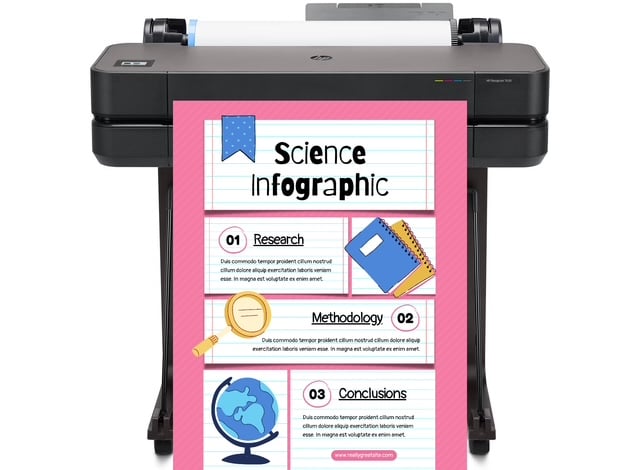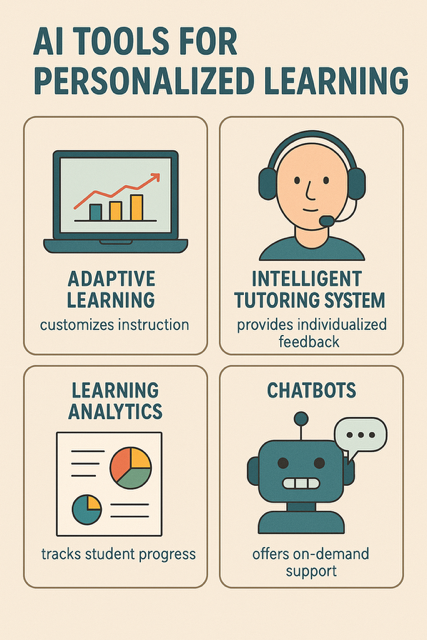
DISCOUNTED EDUCATION PRICING! CALL 1-877-891-8411. We Gladly Accept School Purchase Orders!

In today’s fast-paced educational landscape, personalized learning is no longer a luxury—it’s a necessity. With classrooms becoming more diverse and student needs varying widely, AI tools are stepping in to bridge the gap, offering tailored experiences that boost engagement and outcomes. As we navigate 2025, the integration of AI in education is projected to transform how teachers deliver content and how students absorb it. This article explores the top AI tools for personalized learning in classrooms, highlighting their features, benefits, and real-world applications to help educators and parents find the best AI tools for personalized learning in 2025.
Personalized learning adapts to each student’s pace, style, and interests, leading to better retention and motivation. In 2025, with hybrid models and digital natives dominating classrooms, AI tools are essential for scaling this approach without overwhelming teachers. Key benefits include real-time feedback, adaptive assessments, and inclusive features for diverse learners, making education more equitable and effective. As AI in education continues to evolve, these tools are key to addressing learning gaps and fostering a more inclusive environment.
AI is driving innovation in education, with trends focusing on adaptability, accessibility, and efficiency. Here are the most influential trends shaping personalized learning this year:
These trends are making classrooms smarter, with AI tools handling routine tasks so teachers can focus on mentoring and building relationships.
Here are some standout tools revolutionizing classrooms this year, selected for their innovation, user-friendliness, and impact. We’ve curated this list of the best AI tools for personalized learning in 2025 based on their ability to enhance engagement and outcomes in real educational settings.
Khanmigo is an AI-powered tutor that guides students through subjects like math and science with personalized hints and explanations. It adapts in real-time, offering step-by-step guidance without giving away answers, fostering independent thinking. In 2025, new features include VR integrations for immersive simulations and collaborative modes for group learning. Ideal for K-12 classrooms, it’s free for educators and helps bridge gaps in large classes, making it a top choice for budget-conscious schools.
This adaptive math platform uses AI to create customized lesson paths, adjusting based on student responses. It includes gamified elements to keep engagement high and provides detailed reports for teachers. With expansions into science in 2025, DreamBox supports hybrid environments and is praised for improving math proficiency by up to 30% in trials. Subscription-based, it’s a go-to for elementary and middle schools seeking measurable results.
Century Tech combines AI with neuroscience principles to deliver bite-sized lessons tailored to individual needs. It covers core subjects and offers diagnostic assessments to identify strengths and weaknesses. In 2025, enhanced analytics help predict student outcomes, allowing proactive interventions. Used in over 1,000 schools globally, it’s excellent for secondary education with its focus on data privacy and teacher dashboards.
Originating from adaptive learning research, Squirrel AI breaks down knowledge into micro-concepts, pinpointing exactly where students struggle. It uses machine learning to recommend resources and tracks emotional states via engagement metrics. New 2025 updates include multilingual support and integration with AR for hands-on learning. Affordable and scalable, it’s transforming tutoring for diverse student populations in both traditional and microschool settings.
While known for languages, Duolingo’s AI extends to personalized skill-building in reading and math through its schools program. It gamifies learning with streaks and rewards, adapting difficulty dynamically. In 2025, AI-driven storytelling features make lessons narrative-based, boosting retention. Free for classrooms, it’s perfect for introducing personalized tech without a steep learning curve, especially in multilingual environments.
SchoolAI offers interactive activities and educational chatbots designed for classrooms, creating personalized experiences through gamified quizzes and adaptive feedback. In 2025, it includes tools for generating custom lesson plans and monitoring student progress in real-time. Free for basic use, it’s ideal for teachers wanting to incorporate AI without extensive training.
This platform helps teachers create personalized content quickly, from differentiated worksheets to interactive lessons. AI automates grading and provides insights into student performance. In 2025, enhanced features like voice-activated tutoring make it accessible for all ages, positioning it as a favorite for busy educators.
Curipod enables teachers to build interactive lessons in minutes using AI, with adaptive elements that adjust to student responses. It supports exploration of various topics and fosters critical thinking through polls and discussions. Popular in middle schools, it’s a versatile tool for hybrid learning in 2025.
Diffit uses AI to adapt reading materials to different levels, generating summaries, questions, and vocabulary lists tailored to individual students. In 2025, it integrates with popular LMS for seamless use, helping teachers differentiate instruction effortlessly.
Notion’s AI features allow educators to organize personalized learning paths, generate summaries, and brainstorm ideas in one collaborative space. In 2025, it’s expanding with smart note-taking and integration for group projects, making it a powerful tool for project-based personalized learning.
These tools represent the best AI for education in 2025, offering a mix of free and paid options to suit various classroom needs.
To get the most out of these AI tools for personalized learning in 2025, start with clear goals—whether it’s improving math scores or supporting diverse learners. Train staff through short workshops, involve students in the process for buy-in, and monitor progress with built-in analytics. Address privacy concerns by choosing tools with strong data protection, and combine AI with human interaction for balanced education.
By incorporating these cutting-edge AI tools into your teaching arsenal, educators can truly revolutionize their classrooms, fostering dynamic, student-centered environments where every learner thrives at their own pace. Imagine a space where diverse needs are met seamlessly—gifted students are challenged with advanced content, while those needing extra support receive targeted guidance without stigma. This not only boosts engagement and academic outcomes but also cultivates essential life skills like self-directed learning and resilience, preparing kids for a rapidly evolving world where adaptability isn’t just an advantage—it’s the key to success.
As we delve deeper into 2025, the advancements in AI for education are accelerating at an unprecedented rate, from sophisticated adaptive algorithms to intuitive virtual tutors that mimic human empathy. Embracing personalized learning through these technologies isn’t merely an innovative choice; it’s an essential step toward achieving equitable outcomes for all students, regardless of background, ability, or location. In an era of hybrid and remote learning models, AI bridges gaps that traditional methods often overlook, ensuring no child is left behind in the pursuit of knowledge.
But where do you begin? The beauty of these tools lies in their accessibility—start small by piloting one in a single lesson or unit. For instance, introduce Khanmigo for math support during a trial week, gather feedback from students and colleagues, and iterate from there. You’ll likely witness immediate results: soaring engagement levels, improved retention rates, and a more vibrant classroom atmosphere. As you scale up, integrate multiple tools to create a cohesive ecosystem, blending AI-driven insights with your irreplaceable human touch for the ultimate blended learning experience.